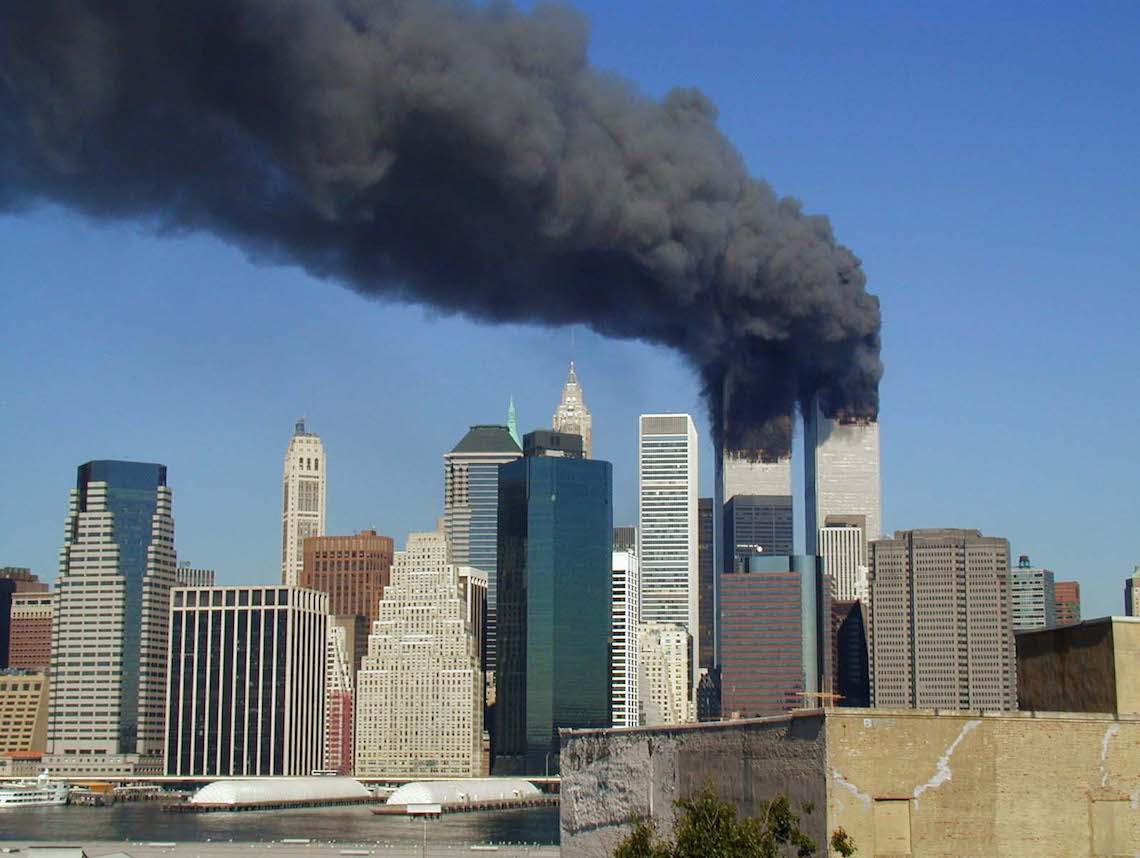 Photo from Wikipedia
Photo from Wikipedia I had not intended to go to New York. Instead, after having helped launch Los Angeles’ Threat Preparedness Task Force, my focus for the past several weeks had been on practical measures that our city can implement to be better prepared in the event of a catastrophe. My brother, who now lives in Brooklyn, had suggested that I travel to New York and visit Ground Zero to develop a firsthand understanding of the urgency of my work. Although I believed that the media had made me well aware of the scope of the devastation in the financial district, I followed his advice and flew to JFK.
My brother was right. The most enduring memory I have from my visit to Ground Zero is its vastness. It is impossible to grasp the extent of the damage and destruction from the televised images.
It is as if Century City ceased to exist. It is as if you could look from Olympic to Santa Monica boulevards unobstructed. It is as if all that lay between the Music Center and the Central Library were dirt, debris and dust. The scope of the damage — the amount of dense, urban, human environment completely laid to waste — is simply overwhelming.
Ground Zero is a beehive of activity, giving the misleading impression of a giant construction zone. Tangled beams and steel supports twist skyward, seemingly the products of the early stages of a new Frank Gehry composition. But of course, that is not the case — the steel girders that remain are all that is left of the strong buildings that the twin towers collapsed onto on Sept. 11, 2001.
We passed countless storefronts still caked in dust. We stopped in front of a Wall Street Brooks Brothers store, which ordinarily would be immaculately maintained and teeming, and saw instead only dust, boarded-up windows, and charred walls. We could see how the floors on many surrounding buildings had pancaked on top of one another, and peered through ragged openings in the ground to the Cortland Street subway station.
The devastation had a random quality to it. Some buildings near the epicenter had been spared, while companion structures just yards away stood decimated.
There was a vast emptiness where the towers themselves had once stood — just a gently rolling pile of rubble over which bulldozers and cranes swarmed. There was prodigious activity — welders breaking the steel into smaller pieces, heavy machines digging and loading, and a parade of trucks leaving the site piled with debris. We saw firefighters continuing their grim, unreported task of searching for human remains.
From Ground Zero, one can observe dozens of skyscrapers, many blocks away, whose windows are shattered and whose exteriors remain covered in protective netting.
The shells of some buildings at Ground Zero were still standing, and in many respects, these skeletons were the most difficult sights to take in. You can see through the windows into the office spaces. You can visualize people sitting at the their desks in window offices, and the bustle of clerks, computer technicians, and executives on a sunny Tuesday morning.
All the while, seven weeks later, smoke continued to billow from the center of the site, often enveloping the recovery workers. Firefighter cranes poured a steady stream of water into the burning hole, with no apparent effect.
We walked to a viewing platform, which has been erected at Ground Zero. The wooden railing was already defaced by the most gut-wrenching graffiti imaginable. “Jimmy Waters — Your family loves and misses you for the rest of our lives. Love you always. Rest in peace.” I saw love notes to lost firefighters, signed “Mom,” as the smoke swirled around us.
A police officer approached and brusquely asked us to move along. We complied, at first not understanding his abruptness. At that moment 40 people, each holding a bouquet of flowers, each clutching a teddy bear, and each bearing a sticker stamped “Family” ascended the viewing platform. We left quickly, overcome not only by their sadness, but by the realization that their grief accounted for such a small portion of the overall atrocity.
As our van left Ground Zero we passed through a “Wash Station” where departing workers scrub down when returning to civilization. Our van was hosed down to remove the dust that had accumulated in under an hour.
That day, I recommitted myself to doing whatever I could to make sure that Los Angeles takes the necessary measures — and makes the necessary sacrifices — to be prepared in case the unthinkable happens here. Already, our task force has recommended a series of practical security measures that the city will implement in the short term.
- We will protect first responders in the police and fire departments by purchasing new “escape hoods” to enable them to respond to biological and chemical attacks.
- We have also recommended increasing the size of the LAPD’s bomb squad and Hazmat teams, fully staffing a third Hazmat team in the Fire Department, purchasing additional bio-detection equipment, and permanently assigning police and fire personnel to the county’s Terrorism Early Warning Group.
- We will also focus on long-term issues, such as increasing the size of the LAPD’s Anti-Terrorist Division, planning a system for the emergency distribution of medicines, and providing new training for police officers and firefighters commensurate with the new sorts of threats we face.
I realize the enormity of our challenge. It is hard to fathom what it would take to be fully prepared for the new battles that our enemies now seek to take to our soil. But we must try.





















 More news and opinions than at a Shabbat dinner, right in your inbox.
More news and opinions than at a Shabbat dinner, right in your inbox.